-
U.S. Army to deploy VTOL UAV
The U.S. Army is developing a helicopter-like, VTOL (vertical-take-off-and-landing) UAS (unmanned aircraft system) with a DARPA-sponsored ARGUS wide-area surveillance sensor suite designed to beam back information and images of the surrounding terrain
-
-
WikiLeaks “Spyfiles” reveal covert surveillance industry
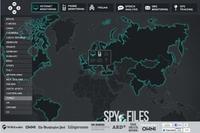
Earlier this month WikiLeaks launched its latest campaign, releasing hundreds of documents that reveal the extent of sophisticated surveillance technology that has been used by both oppressive rulers and Western democracies; the more than 287 files expose the work of roughly 160 companies operating in twenty-five countries and their concerted effort to market technology that allow governments or law enforcement agencies to track and monitor individuals
-
-
ACLU questions police tracking of cell phones
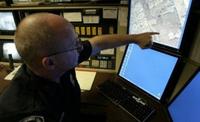
Civil rights advocates are increasingly uneasy with law enforcement agencies increasing use of cell phone triangulation to pinpoint an individual’s location; earlier this year, thirty-four ACLU affiliates from across the country filed open records requests from local law enforcement agencies requesting information on how authorities are tracking cell phones
-
-
A UAV that uses wind power as a bird does
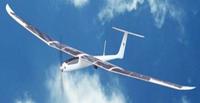
An engineering Ph.D. students wins prizes for the design of an unmanned aerial vehicle (UAV) — dubbed Green Falcon II — which would be powered by the sun and wind; “While all airplanes mimic the shape of birds, the Green Falcon II will literally use the wind to power its movement, just as a bird would,” the young inventor says
-
-
Iran claims it is nearly finished extracting data from captured drone

On Monday Iran claimed that it had nearly finished recovering data from a captured U.S. surveillance drone; The unmanned aerial vehicle has been identified as the RQ-170 Sentinel, nicknamed “The Beast of Kandahar,” a stealth drone designed by Lockheed Martin covertly to gather intelligence
-
-
Companies urged to limit sale of surveillance tech to repressive regimes
The European Commission is urging private companies to limit the sale of surveillance technology to foreign countries that “repress” their people
-
-
Model airplane hits federal building
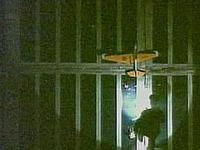
Last week a three-foot model airplane crashed into a federal building in Waltham, Massachusetts; federal investigators from DHS and the FBI promptly began investigating the incident, but so far no evidence exists to suggest any foul play; earlier this year a 26-year old man from Massachusetts was arrested for plotting to attack the Pentagon with a remote-controlled plane packed with explosives
-
-
Push for greater use of drones in U.S.
Several federal agencies want to see more drones deployed in the United States. DHS is the main federal agency to push for using UAVs in domestic missions. The Department of Justice, too, is working with aviation manufacturers and local law enforcement agencies to introduce drones to police and sheriffs departments. The Pentagon also wants to open more U.S. airspace for drone testing and deployment, as U.S. military and National Guard bases are hosting DHS drones.
-
-
Underwater drones help police keep harbors safe
Growing attention to underwater security along U.S. coasts has resulted in an increasing reliance on a relatively new tactical weapon for the police: an unmanned submersible drone, often referred to as a remote-operated vehicle, or ROV. The NYPD has six of these underwater drones, similar to those in use by the United States military and by oil companies with offshore operations.
-
-
DARPA seeks mobile apps to fly drones
DARPA, the Pentagon’s research arm, is seeking a mobile app to improve sensors for drones and other military surveillance, reconnaissance, and intelligence vehicles. The agency is seeking smartphone app developers for its Adaptable Sensor System (ADAPT) program. The program uses a commercial development model to facilitate rapid delivery and configuration of sensor systems, which typically take three to eight years to develop, the agency said.
-
-
Autonomous deployment vehicles in flight tests
The Autonomous Deployment Demonstration (ADD) program has successfully completed flight tests; the ADD concept is to enable small unmanned air vehicles (UAV) equipped with sensor payloads to be launched from aircraft (manned or unmanned), balloons, or precision guided munitions, and dispersed in selectable patterns around designated areas
-
-
Persistent undersea surveillance by autonomous robots
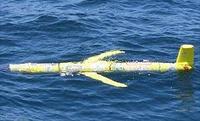
The U.S. military plans to deploy squadrons of air, surface, and undersea robotic vehicles later this decade, and wants to make these vehicles more autonomous; researchers develop an algorithm that helps sea gliders decide when to spend more time looking at regions that have changes in activity or environmental factors; without the control algorithm, gliders paid equal attention to all areas and acquired less information
-
-
Increased use of UAVs leads to new job opportunities
The growing importance of unmanned aerial vehicles (UAVs) is producing new job opportunities across the United States, with more likely to come as drones enter the civilian realm; the Association for Unmanned Vehicle Systems International estimates that 23,000 jobs could be added over the next fifteen years if drones are allowed in U.S. skies
-
-
Drones set to become ubiquitous in U.S. airspace
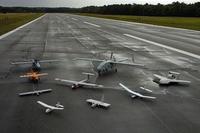
Unmanned aerial vehicles (UAVs) could soon become commonplace in U.S. civilian airspace with farmers using them to spray crops, police deploying drones to gather intelligence ,and utility companies using them to monitor oil, gas, and water pipelines; next January the Federal Aviation Administration (FAA) is set to release new regulations on the use of small drones in the United States
-
-
British law enforcement exploits flaw in iTunes to spy

British law enforcement agencies and Apple are coming under sharp criticism after it was discovered that authorities exploited a security flaw in iTunes to spy on individuals
-
- All
- Regional
- Water
- Biometrics
- Borders/Immig
- Business
- Cybersecurity
- Detection
- Disasters
- Government
- Infrastructure
- International
- Public health
- Public Safety
- Communication interoperabillity
- Emergency services
- Emergency medical services
- Fire
- First response
- IEDs
- Law Enforcement
- Law Enforcement Technology
- Military technology
- Nonlethal weapons
- Nuclear weapons
- Personal protection equipment
- Police
- Notification /alert systems
- Situational awareness
- Weapons systems
- Sci-Tech
- Sector Reports
- Surveillance
- Transportation
Advertising & Marketing: advertise@newswirepubs.com
Editorial: editor@newswirepubs.com
General: info@newswirepubs.com
2010-2011 © News Wire Publications, LLC News Wire Publications, LLC
220 Old Country Road | Suite 200 | Mineola | New York | 11501
Permissions and Policies
Editorial: editor@newswirepubs.com
General: info@newswirepubs.com
2010-2011 © News Wire Publications, LLC News Wire Publications, LLC
220 Old Country Road | Suite 200 | Mineola | New York | 11501
Permissions and Policies
